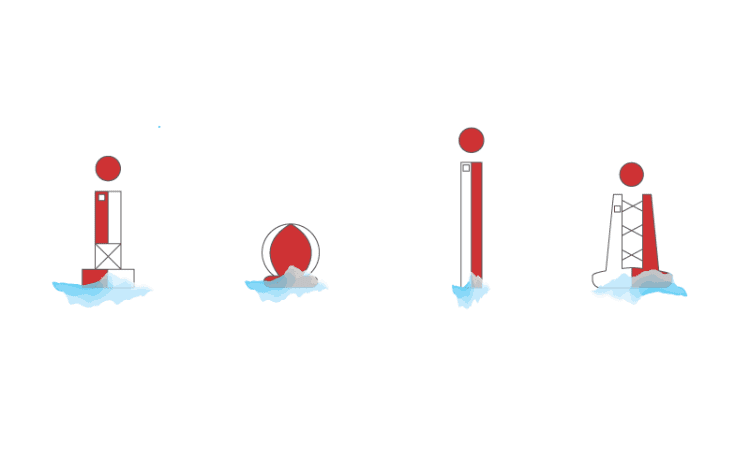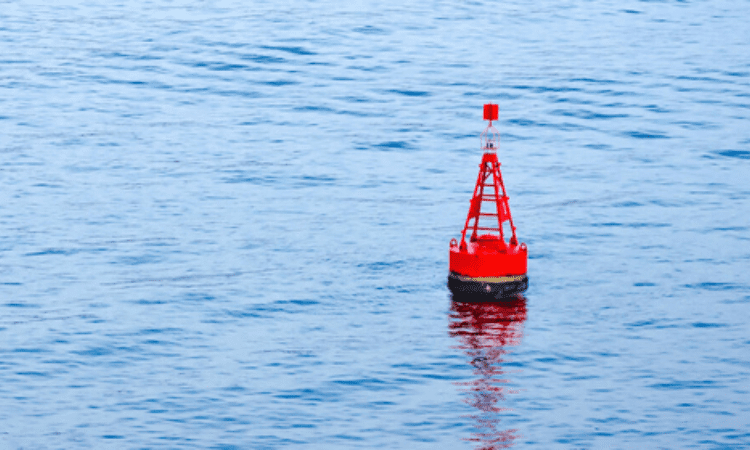What Color Are Safe Water Markers?: Do you ever find yourself admiring unique buoys and markers while you’re out on the water? Have you given them any thought? They’ve joined you! In this piece, we’ll delve into the world of safe water markers, exploring their colors, meanings, and crucial role in ensuring the safety of boaters. By the conclusion of your journey, you’ll be an expert swimmer who understands the significance of each hue.
What Role Do Safe Water Markers Play?
Safe water markers are an integral aspect of maritime navigation. Their primary objective is to supply mariners with the best and most secure routes possible. Ships can be guided around perils like shallow water and shoals with the help of these markers.
Positive Indicators
Green safe water marks typically take the form of squares or rectangles. When placed on the correct side of a marker, they indicate the presence of open, unhazardous water. If you are traveling upstream and notice a green marker, you should keep to your left (your port side) because that side of the river is navigable.
Red Markers
On the other hand, red safe water markers, resembling cylinders or cans, indicate the presence of safe water on their side of placement. Keep the red markers on your starboard (right) side as you travel upstream. When used in conjunction with the green markings, these implements create a “channel” for risk-free passage.
Popular Delusions
There are a few common misconceptions that could pose problems for boaters despite the well-established practice of color-coding safe water signs. Here are some examples of explanations:
Left versus Right
To avoid confusion about which side is “right” and which is “left,” keep in mind that the direction of travel dictates the “right” and “left” sides of these markers, not the marker’s orientation. As you travel upstream, keep the green marker on your left and the red marker on your right.
Nighttime Navigation
Safe water markers come with a variety of lighting options to increase nighttime visibility. It is vital to comprehend these lights in order to move securely at night.
Green on the Right: If the light on the right is green, you are on the safe side of the channel.
If you see a red light on the left side of the channel, you are in the correct location.
Shapes of Safe Water Markers
There is a wide variety of forms and sizes of safe water markers, and they all serve different purpose.
Green Plaza
Green squares are frequently used to indicate the point of convergence between two channels or the beginning of a favored channel. They point mariners in the direction of the safest path.
Red Cylinder or Can
On either side of the specified lane, red can or cylindrical markers are frequently positioned. They show the safest routes and recommend good water for boats.

Markers for Secure Water Location
Thanks to strategically placed safe water markers, boaters may go down rivers with confidence and ease. It is often necessary to know their location to ensure a safe journey.
Coastal Areas
Safe water markers are extensively used in coastal places to designate the paths that go from the open sea into harbors or ports. They guide ships across dangerous waters to safe docking sites.
Inland waterways
On rivers and lakes, these marks help boaters steer clear of shallow areas, obstacles, and other potential dangers. Both business and leisure vessels can travel more readily thanks to them.
International Standards
The International Association of Lighthouse Authorities (IALA) has standardized the color and shape of safe water markers worldwide. Because of this consistency, mariners all across the world can read and interpret these vital signs with ease.
IALA Regions
The IALA has split the globe into two sections, designated as Region A and Region B. The colors used to designate safe drinking water sources vary by region.
In Region A, encompassing the Americas, the Caribbean, and the Philippines, boaters keep red markers on the right when traveling upstream, while green markers remain on the left.
Europe, Africa, Asia, and Australia make up what we’ll call Region B. It’s set up backward from how you may expect. When heading upstream, one should retain the green markers on the right and the red markings on the left.
Conclusion:
Understanding the shapes and colors of safe water markers is crucial for good navigation on the water. These signs serve as landmarks to ensure safe navigation and to assist you in avoiding potentially dangerous areas. You can confidently navigate the waters if you know which markers to stay to your left and right and how to interpret their lights.
Keep in mind that these symbols serve a similar purpose to maritime traffic signals and that with the right knowledge, you can find your way to your destination with ease.
For more content like this, visit our website 4 Boating Stuff.

